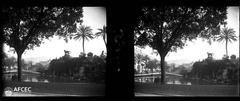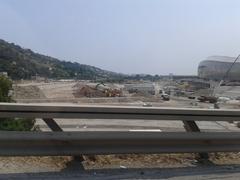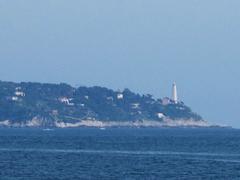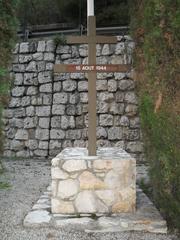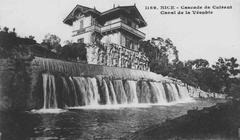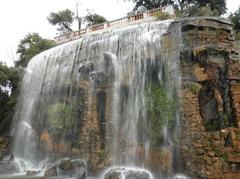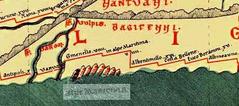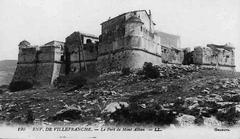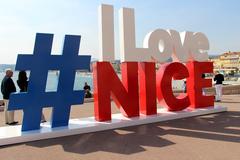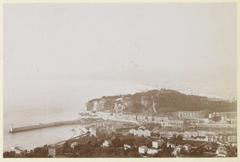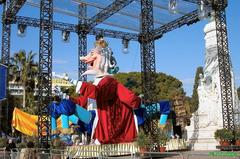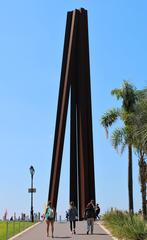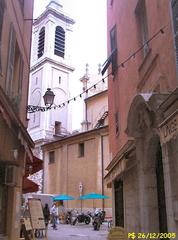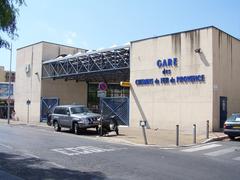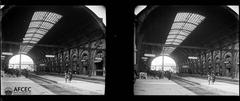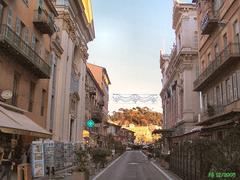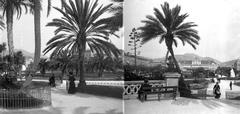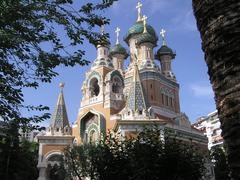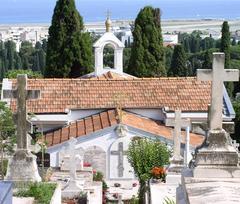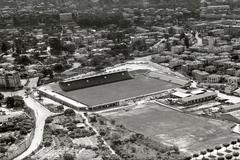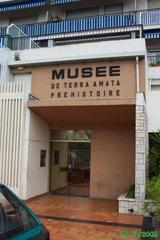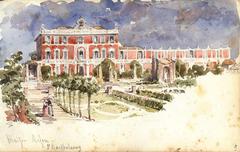Nice Port Visiting Hours, Tickets, and Travel Guide to Nice Historical Sites
Date: 04/07/2025
Introduction to Nice Port and Its Historical Significance
Nestled along the iconic French Riviera, Nice Port—officially known as Port Lympia—stands as a testament to centuries of maritime heritage, vibrant local life, and forward-thinking sustainability. Since its 18th-century inception, the port has evolved into a dynamic hub, seamlessly blending the old and new. Its proximity to the Old Town (Vieux Nice), Castle Hill, and Mont Boron positions it at the heart of the city’s cultural and historical exploration. Whether admiring architectural gems such as the 16th-century Port Lympia Tower or soaking in the lively quay lined with traditional “pointu” fishing boats and luxury yachts, visitors are greeted by an atmosphere that embodies the spirit of Nice (Cityxee; Nice Airport).
Beyond its visual charm, Nice Port leads the way in sustainable tourism, with initiatives like shore power, solar energy, and robust waste management meeting international standards, including ISO 14001 and the Blue Flag (Explore Nice Côte d’Azur). The port’s accessibility is further enhanced by Tramway Line 2, connecting the airport to the harbor in under 30 minutes (leportdenice.com).
Recent regulatory changes, particularly the introduction of cruise ship size and passenger limits for 2025, underline Nice’s commitment to responsible tourism, balancing economic vitality with the protection of its cultural and natural assets (Marine Insight; CruiseMapper).
This detailed guide covers everything you need to know about visiting Nice Port: from its storied past and rich visitor amenities to up-to-date cruise policies, eco-initiatives, and practical advice for making the most of your time in this Mediterranean gem.
Table of Contents
- Port Lympia: Historical Overview
- From Origins to Modern Day
- Architectural and Cultural Landmarks
- The Port’s Economic and Social Role
- Urban Integration and Cultural Life
- Visiting Information
- Port Layout and Facilities
- Environmental and Sustainability Initiatives
- Cruise Ship Regulations (2025)
- Sustainable Tourism and Urban Development
- FAQ
- Conclusion
- References
Port Lympia: Historical Overview
Origins and Early Development
Port Lympia’s roots stretch to the mid-18th century, although its strategic importance was recognized much earlier. Named after a natural spring (“Lympia”) that once fed the marshland here, the port’s construction began in earnest under the Sardinian king to facilitate maritime trade, with the first section completed in 1751 (Wikipedia; Cityxee). The location, chosen for its natural protection and access to Mediterranean routes, transformed Nice into a burgeoning trading hub.
Expansion Under French Rule
After Nice was ceded to France in 1860, the port underwent extensive modernization. With new quays, warehouses, and passenger facilities, Port Lympia’s capacity and economic relevance grew rapidly. The inauguration in 1857, attended by Russian royalty, signaled its emergence as a regional powerhouse, with cargo volumes increasing tenfold by the early 20th century (Cityxee; France Voyage).
Architectural and Cultural Landmarks
The 16th-century Port Lympia Tower (Tour de la Lanterne) is a highlight, serving as a defensive and navigational beacon. Standing 29 meters tall, it has witnessed wars and peacetime transformations, and is now a classified historical monument open to visitors (Nice Airport).
Economic and Social Role
By the 20th century, Port Lympia was a cornerstone of Nice’s economy, handling passenger ferries to Corsica, supporting exports from the Paillon valley, and serving both traditional fishing and modern yachting (Cityxee; French Riviera Travel). The coexistence of “pointu” fishing boats and luxury vessels epitomizes this blend of heritage and innovation.
Urban Integration and Cultural Life
Port Lympia is a vibrant urban space, surrounded by the Promenade des Anglais, Old Town, and Castle Hill. The district’s Italian-French architecture, bustling cafés, antique shops, and festivals create a cosmopolitan ambiance. The port’s central location and excellent public transport connections make it a perfect base for exploring Nice and the wider Côte d’Azur (CruiseTrail; Destination Abroad).
Visiting Information
Hours and Entry
- Port Area: Open year-round, 24/7, free access.
- Port Lympia Tower: Generally open seasonally, 10:00 AM–6:00 PM (extended hours in summer).
Ticketing
- Port Area: Free.
- Port Lympia Tower & Guided Tours: Tickets usually €5–€8, with discounts for children and seniors. Check online or at local tourist offices for current details.
Accessibility
Port Lympia and its main attractions are wheelchair-friendly, though some historic areas have uneven terrain. Most public transport, including tramway line 2, is fully accessible.
Transportation
- By Tram: Line 2 connects the airport and city center directly to the port in about 26 minutes (leportdenice.com).
- By Foot: The port is a short walk from central Nice.
- Parking: Several underground and surface lots nearby, all well-signposted.
Nearby Attractions
- Old Town (Vieux Nice): Narrow streets, vibrant markets, and authentic cuisine.
- Promenade des Anglais & Castle Hill: For panoramic views and open-air relaxation.
- Cours Saleya Market: Famous for flowers and local produce.
- Museums: Museum of Modern and Contemporary Art, Place Garibaldi, and more.
Events and Tours
The port hosts year-round cultural events, regattas, and festivals. Guided walking tours and boat excursions delve into the city’s maritime past and present.
Photography Tips
Capture the colorful fishing boats, the breakwater lighthouse, and panoramic views from Mont Boron or the #ILOVENICE sign on Quai Rauba Capeu.
Port Layout and Facilities
Port Lympia is compact and walkable, divided into:
- Passenger/Ferry Terminals: With modern facilities, waiting areas, Wi-Fi, shops, and tourist info (about2cruise.co.uk).
- Yachting and Marina: 500+ berths for yachts, superyachts, and traditional boats (leportdenice.com).
- Cargo Docks: Serving local business needs.
- Public Spaces: Pedestrian-friendly quays, squares, and terraces.
- Accessibility: Wheelchair-friendly paths, adapted shuttle buses, and marked parking.
- Medical and Family Facilities: 24/7 care center, pharmacy, play areas, and nursing rooms.
Environmental and Sustainability Initiatives
Nice Port is a Mediterranean leader in sustainable operations:
- Shore Power: Reduces air pollution by up to 95%.
- Solar Energy: Supplies about 30% of electricity.
- Waste Management: Advanced sorting, recycling, and composting.
- Water Management: Wastewater reuse and marine monitoring.
- Eco-certifications: ISO 14001, Blue Flag, Clean Port, and more (Explore Nice Côte d’Azur).
- Low-Carbon Transport: Tram, electric buses, and bike sharing.
- Community Events: Initiatives like Operation Green Flag promote marine conservation.
Cruise Ship Regulations 2025: What Visitors Need to Know
New Limits and Rationale
From July 1, 2025, cruise ships over 900 passengers or 190 meters are banned from docking at Nice and Villefranche-sur-Mer, responding to overtourism and environmental concerns (Marine Insight; CruiseMapper). This move aims to protect the city’s UNESCO World Heritage status and improve the quality of life for residents and visitors alike.
Following industry feedback, a compromise allows ships up to 2,500 passengers to anchor and tender at Villefranche-sur-Mer, with only one such ship allowed at a time (CruiseMapper). Larger ships must reroute to ports like Cannes or Marseille. Smaller vessels (under 450 passengers) retain docking rights at Nice.
Impact and Visitor Advice
- Cruise Travelers: Confirm itineraries for 2025 and beyond, as some ships may use tenders or alternative ports.
- Independent Travelers: Smaller ferries and boats continue operating as before.
- Local Experiences: Expect fewer large cruise crowds, enhancing the port’s relaxed, authentic atmosphere.
Sustainable Tourism and Urban Development
Nice is investing in green infrastructure, including the expansion of the Promenade du Paillon (adding eight hectares of urban parkland), tramway improvements, and public spaces designed for pedestrians and cyclists (Meet in Nice Côte d’Azur). These projects reinforce the city’s reputation for responsible, high-quality tourism and enhance everyday life for residents and visitors.
FAQ
Q: What are the Nice Port visiting hours?
A: The port area is open year-round, 24/7, with free access. The Port Lympia Tower is open seasonally, usually 10:00 AM–6:00 PM.
Q: Are tickets required to visit the port?
A: No, entry to the port area is free. Guided tours or tower visits require tickets.
Q: Is the port accessible for people with disabilities?
A: Yes, most facilities are accessible, but some historic streets may be uneven.
Q: How do I get to Nice Port from the airport?
A: Take Tramway Line 2 for a direct, eco-friendly connection.
Q: How do cruise ship changes affect visitors?
A: Only smaller ships dock at Nice; large ships may use Villefranche-sur-Mer or alternative ports.
Conclusion
Nice Port (Port Lympia) is a vibrant intersection of history, culture, and sustainable innovation. Whether you’re a history buff, a leisure traveler, or arriving by sea, the port offers unforgettable experiences—panoramic views, lively markets, waterfront dining, and easy access to the best of the Côte d’Azur. With its commitment to responsible tourism, green infrastructure, and rich heritage, Nice Port is a must-visit destination. Stay updated with official resources, plan ahead, and immerse yourself in the unique Mediterranean spirit of Nice.
For the latest travel information, guided tour bookings, and insider tips, visit the official Port of Nice website or use the Audiala app to enhance your experience.
References
- Port Lympia Visiting Hours, Tickets & Historical Guide to Nice’s Iconic Port, 2025, Cityxee (Cityxee)
- Port Lympia Tower Historical Overview, 2025, Nice Airport (Nice Airport)
- Port of Nice Visitor Guide, 2025, leportdenice.com (leportdenice.com)
- Nice Port Sustainability Initiatives, 2025, Explore Nice Côte d’Azur (Explore Nice Côte d’Azur)
- Nice Port and Cruise Ship Regulations 2025, 2025, Marine Insight (Marine Insight)
- Nice Cruise Ship Size Policy Update, 2025, CruiseMapper (CruiseMapper)
- Port of Nice Facilities and Accessibility, 2025, about2cruise.co.uk (about2cruise.co.uk)
- Nice Tourism and Urban Development Projects, 2025, Meet in Nice Côte d’Azur (Meet in Nice Côte d’Azur)
